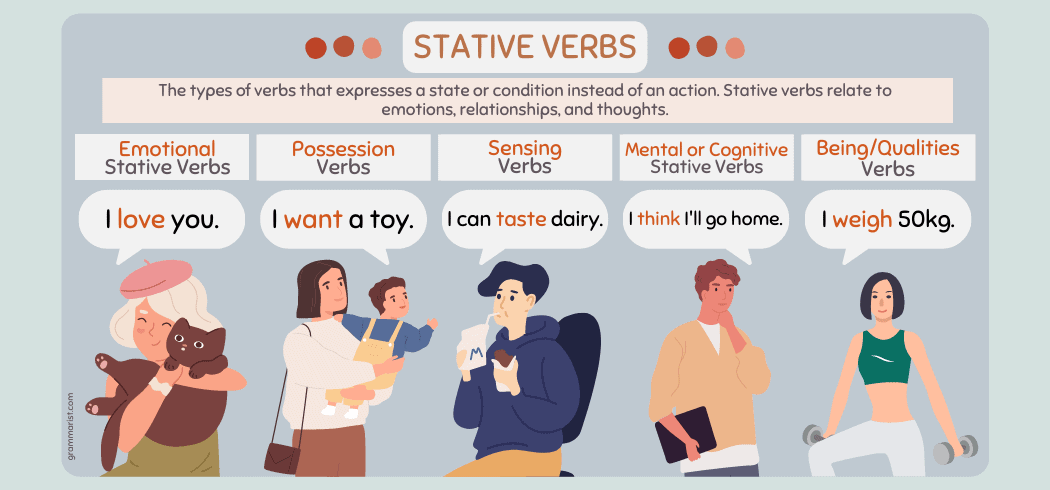Not all verbs express actions. Some verbs that indicate a state of being or a condition are called stative verbs.
Discover the meaning, rules, and examples of stative verbs in sentences. Then, answer the three stative verb worksheets and grammar exercise tests with a printable PDF to test your understanding.
What Are Stative Verbs?

Stative verbs are verbs that do not express action but a state. These verbs usually relate to thoughts, emotions, senses, relationships, and measurements.
The most common stative verbs are feel, see, hear, have, like, and want. For example:
- I want a new laptop.
- She feels happy today because she received flowers.
- I dislike the new schedule.
The single most important rule when using stative verbs is not to use them in continuous tenses. That means we can’t use their present participle forms, such as seeing, hearing, liking, and wanting. For example:
- Incorrect: I’m smelling your vanilla perfume.
- Correct: I smell your vanilla perfume.
There are lots of examples of English verbs that are considered stative. But here is a complete list of the most common stative verbs.
- Adore
- Agree
- Appreciate
- Be
- Believe
- Contain
- Cost
- Depend on
- Dislike
- Disagree
- Imagine
- Mean
- Possess
- Own
- Realize
- Recognize
- Sound
- Think
- Understand
- Wish
Learn More About Verbs
Stative verbs express a state of action instead of action. They relate to emotions, senses, thoughts, and measurements. I hope this guide and set of exercises help you master stative verbs. Check out our other online exercises for more practice!